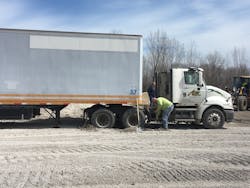Could Autonomous Trucks Solve Indiana Traffic Problem?
A new report from TRIP, the national transportation research nonprofit, calls the convergence of I-94 and I-65 in Northern Indiana one of the most congested intersections in the nation, according to Government Technology and the Merillville Post-Tribune, and autonomous trucks could be an answer.
Among the effects of the congestion, the article says, are costly freight delays and safety.
In Indiana, an average of 18 people per 1 million population were killed annually in crashes involving a heavy truck from from 2013-2017. This was the 17th highest rate in the U.S., the TRIP report stated.
Nationwide, traffic fatalities as a result of crashes involving large trucks increased 20 percent in that time span, from 3,981 to 4,761. Approximately 5 of 6 people killed in crashes involving a large truck were occupants of the other vehicle, pedestrians or bicyclists.
Possible autonomous solution
TRIP recommended improved roadway safety, additional truck parking spaces so drivers can rest, and continuing to develop vehicle autonomy as ways of improving driver safety and helping to solve the truck driver shortage now facing the industry.
Ty Warner, executive director of the Northwestern Indiana Regional Planning Commission, told the Post-Tribune that while there are some concerns in the trucking industry about autonomous vehicles, including the loss of jobs, he believes these vehicles would have advantages.
"You would have faster reaction times and better synchronization, which would help stop tandem crashes," Warner said.
He said autonomous vehicles could also greatly reduce the distance needed between vehicles, allowing more vehicles on the road and reducing the need for more lanes.
Other options to improve safety could include separate lanes for truck and passenger vehicle traffic, more rest stops, and driver rest lanes.
You can read the entire article here.
Source: Government Technology
